Answer: Before answering this question, I think it would be better to establish a basic understanding about what tea is first.
Tea is one of the most popular non-alcoholic beverage consumed by >two-third population in the world today. It does not matter how much people know about tea, in general people like its refreshing taste and flavour, try to find solution from its medicinal and mildly stimulating qualities. The first unambiguous text to the consumption of tea can be dated back to the Western Han Dynasty (1046 – 771 BC), and there are many documents about the use of tea in various literature from Chinese traditional medicine practices in the past over two thousand years in China.
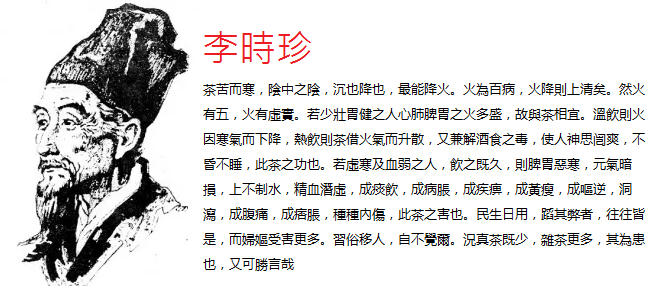 The most influential Chinese medical doctor, scientist, pharmacologist, herbalist and acupuncturist of the Ming Dynasty, Li Shi-Zhen (1518-1593) gave a very thorough dissertation about the pharmacological effects of tea in Compendium of Materia Medica (Bencao Gangmu) that the consumption of tea should consider the physical conditions of each individual, one can only enjoy the health benefits from tea by knowing how to consume tea in appropriate manner; for those who have unsuitable problems, it is perhaps better to avoid consuming tea. In his discourse, he set the pharmacological qualitative of tea as “taste bitter sweet, mild Yin, non-toxic”. In his book he wrote:
The most influential Chinese medical doctor, scientist, pharmacologist, herbalist and acupuncturist of the Ming Dynasty, Li Shi-Zhen (1518-1593) gave a very thorough dissertation about the pharmacological effects of tea in Compendium of Materia Medica (Bencao Gangmu) that the consumption of tea should consider the physical conditions of each individual, one can only enjoy the health benefits from tea by knowing how to consume tea in appropriate manner; for those who have unsuitable problems, it is perhaps better to avoid consuming tea. In his discourse, he set the pharmacological qualitative of tea as “taste bitter sweet, mild Yin, non-toxic”. In his book he wrote:
Tea tastes bitter and cold, is Yin in the Yin; can lower down and reduce fire effectively. Fire is the source of many deceases, clarity rises when fire is reducing. But there are five fire and there are Yin and Yang in fire. For young and strong healthy people often have strong fire in heart, lung, spleen and stomach, then tea is a good match. Warm drink can reduce the fire because of Yin, the fire energy is dispelled with the hot drink. Can dissolve the poison from food and alcohol, refreshing energy in mind, feel not fainting or sleepy. These are benefits from tea. However, to those who suffer from cold and low energy in blood, the long and too much consumption of tea can cause the rise of ill Yin in stomach and spleen that weaken the vitality without knowing, without correction can furthermore cause serious problems to the essence and blood deficiency in various symptoms, such as too much sputum, gas, muscle paralysis, looking pale and skinny, inverse vomiting, diarrhea, stomach ache or liver swelling, all kind of internal injuries; these are damaged by incorrect tea consumption. There are many people making the mistake and there are more to follow the wrong doing. Habits and culture influence people’s preference without knowing. Not to mention there are less authentic pure quality tea and too more blended tea, damages are more than what words can described.
There are many scientific research reports published by well known institutes in the world, many pharmacological points have been confirmed under the modern scientific research methods and reports have been published in the East and West.
Today tea is divided in six types subject to the difference in fermentation level that influence the contents of Polyphenol oxidase and Catechin. The content of Epigallocatechin gallate (EGCG) in lighter fermented tea is higher than the heavy fermented teas that could have greater impact on the absorption of Iron and folic acid. Pregnant women therefore perhaps should pay attention to the supplement of iron and folic acid during the pregnancy, regular checking with her doctor is strongly recommended.

While people are attracted by the benefits from Polyphenols and Catechin, they should also need to understand tea made from Camellia sinensis var. L. does contain Caffeine, the content is varied in each type of tea, i.e.
Caffeine in daily drink:
- Black Tea (226.8ml) : 40-120mg
- Green Tea (226.8ml) : 20-40mg
- White Tea : 15mg
- Coca Cola (340,2ml) : 34mg
- Coffee (226,8ml) : 60 – 120mg
- Instant Coffee (226,8ml) : 70mg
- De-Cafe (226,8ml) : 1-5mg
Here we have to point out that we are not sure which type of quality tea those research Laboratories used, but we do know one thing – how we brew tea can influence the caffeine content from the loose leaf tea.
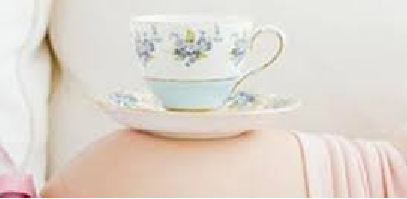 A study from Kaiser Permanente’s Northern California Division of Research from the University of California found that pregnant women who consumed more than 200 milligrams of caffeine daily had double the risk of miscarriage compared with those who avoided the stimulant. Conversely research reports from Yale University and from Denmark claimed it is safe for pregnant woman to consume no more than 200-300mg caffeine a day. The caffeine contained in tea is a central nervous stimulant and could become addictive. Caffeine can be transfused to baby through the blood circulation and the fragile unborn baby is not like adult can dissolve caffeine through metabolic decomposition. A study conducted by the National Institutes of Health found no association between intakes of up to 350 milligrams of caffeine and miscarriage, but if the consumption of caffeine is over 600mg a day then the risk for miscarriage and light-weighted baby is increasing, the risk increases with stronger and longer consumption.
A study from Kaiser Permanente’s Northern California Division of Research from the University of California found that pregnant women who consumed more than 200 milligrams of caffeine daily had double the risk of miscarriage compared with those who avoided the stimulant. Conversely research reports from Yale University and from Denmark claimed it is safe for pregnant woman to consume no more than 200-300mg caffeine a day. The caffeine contained in tea is a central nervous stimulant and could become addictive. Caffeine can be transfused to baby through the blood circulation and the fragile unborn baby is not like adult can dissolve caffeine through metabolic decomposition. A study conducted by the National Institutes of Health found no association between intakes of up to 350 milligrams of caffeine and miscarriage, but if the consumption of caffeine is over 600mg a day then the risk for miscarriage and light-weighted baby is increasing, the risk increases with stronger and longer consumption.
About three years ago, a long time Oolong tea lover YM shared with me her great news that she was expecting her first baby and asked me if she could drink tea. At that time, I gave her a simple suggestion – listen carefully to your body and care for the body; it’s better to brew the tea light and mild (2-3 cups a day) and avoid strong and too much tea. At that time she has no problem. Recently she sent me another good news for the new expectation of her second baby, this time her baby does not like her to drink tea. Even though she loves tea greatly, and the health of herself and her baby must come first. Mother-to-be experiences amazing and non-stop changes in her body, hormones and energy during the pregnancy, and no one or each birth is identical. So back to question – is tea suitable during the pregnancy period? The answer will be “it subjects to who and how is the condition of the pregnant woman and how does she consume tea”. Each pregnant woman should know the best of change in her body and should learn to listen to her unborn angel; nutritionist, doctor, scientist or even tea sommelier will give the best suggestion as they could think of, but till at the end what is the best, the mother-to-be must think rationally and make a cautious decision everyday.
Suggestions during the pregnancy:
- Consume more water than normal, even this should consider the physical differences from person to person.
- Choose pure and nature quality tea, even if you choose caffeine-free infusion or herbal tea should try brew your tea mild
- Limit daily tea consumption, subject to what kind of tea you drink; just remember how you brew it influence the caffeine content
- Warm drinks are recommended, keep the suitable warmth, i.e. 60°C
If you chose the beastfeeding, then definitely should reduce tea consumption a day and should avoid to drink tea one-hour before the breastfeeding, only drink tea afterwards.

 Before we talk about the ‘Gongfu Tea Ceremony”, we perhaps have to first establish a clear understanding about:What is Gongfu tea?Gongfu tea is a general description for the top premium quality tea which must first meet the following quality criteria:
Before we talk about the ‘Gongfu Tea Ceremony”, we perhaps have to first establish a clear understanding about:What is Gongfu tea?Gongfu tea is a general description for the top premium quality tea which must first meet the following quality criteria: is an innovative tea arts presentation invented by a group of Tea Arts Masters in Taiwan in the 70′ based on the traditional Chaozhou style of tea ceremony. Most of time, we use this tea setting for the tea brewing with traditional fermented and roasted Oolong tea. This kind of Gongfu tea ceremony was taking the lead in the 90’s from Taiwan, to Hong Kong and China.
is an innovative tea arts presentation invented by a group of Tea Arts Masters in Taiwan in the 70′ based on the traditional Chaozhou style of tea ceremony. Most of time, we use this tea setting for the tea brewing with traditional fermented and roasted Oolong tea. This kind of Gongfu tea ceremony was taking the lead in the 90’s from Taiwan, to Hong Kong and China.
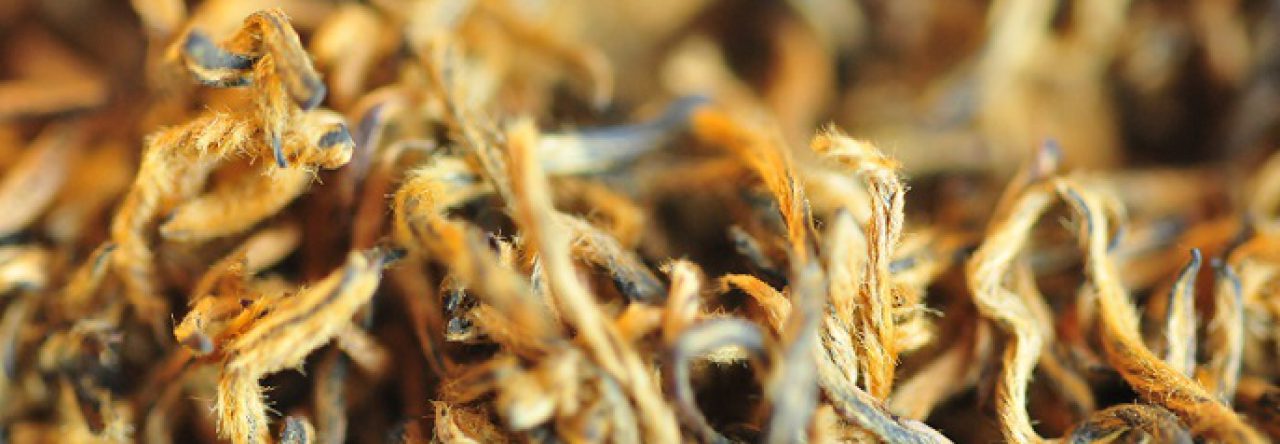


 The most influential Chinese medical doctor, scientist, pharmacologist, herbalist and acupuncturist of the Ming Dynasty, Li Shi-Zhen (1518-1593) gave a very thorough dissertation about the pharmacological effects of tea in
The most influential Chinese medical doctor, scientist, pharmacologist, herbalist and acupuncturist of the Ming Dynasty, Li Shi-Zhen (1518-1593) gave a very thorough dissertation about the pharmacological effects of tea in 
 A study from Kaiser Permanente’s Northern California Division of Research from the University of California found that pregnant women who consumed more than 200 milligrams of caffeine daily had double the risk of miscarriage compared with those who avoided the stimulant. Conversely research reports from Yale University and from Denmark claimed it is safe for pregnant woman to consume no more than 200-300mg caffeine a day. The caffeine contained in tea is a central nervous stimulant and could become addictive. Caffeine can be transfused to baby through the blood circulation and the fragile unborn baby is not like adult can dissolve caffeine through metabolic decomposition. A
A study from Kaiser Permanente’s Northern California Division of Research from the University of California found that pregnant women who consumed more than 200 milligrams of caffeine daily had double the risk of miscarriage compared with those who avoided the stimulant. Conversely research reports from Yale University and from Denmark claimed it is safe for pregnant woman to consume no more than 200-300mg caffeine a day. The caffeine contained in tea is a central nervous stimulant and could become addictive. Caffeine can be transfused to baby through the blood circulation and the fragile unborn baby is not like adult can dissolve caffeine through metabolic decomposition. A Based on the latest report mentioned on the China Times today, here are the top 3 food additives that they suggested consumers to avoid:
Based on the latest report mentioned on the China Times today, here are the top 3 food additives that they suggested consumers to avoid:
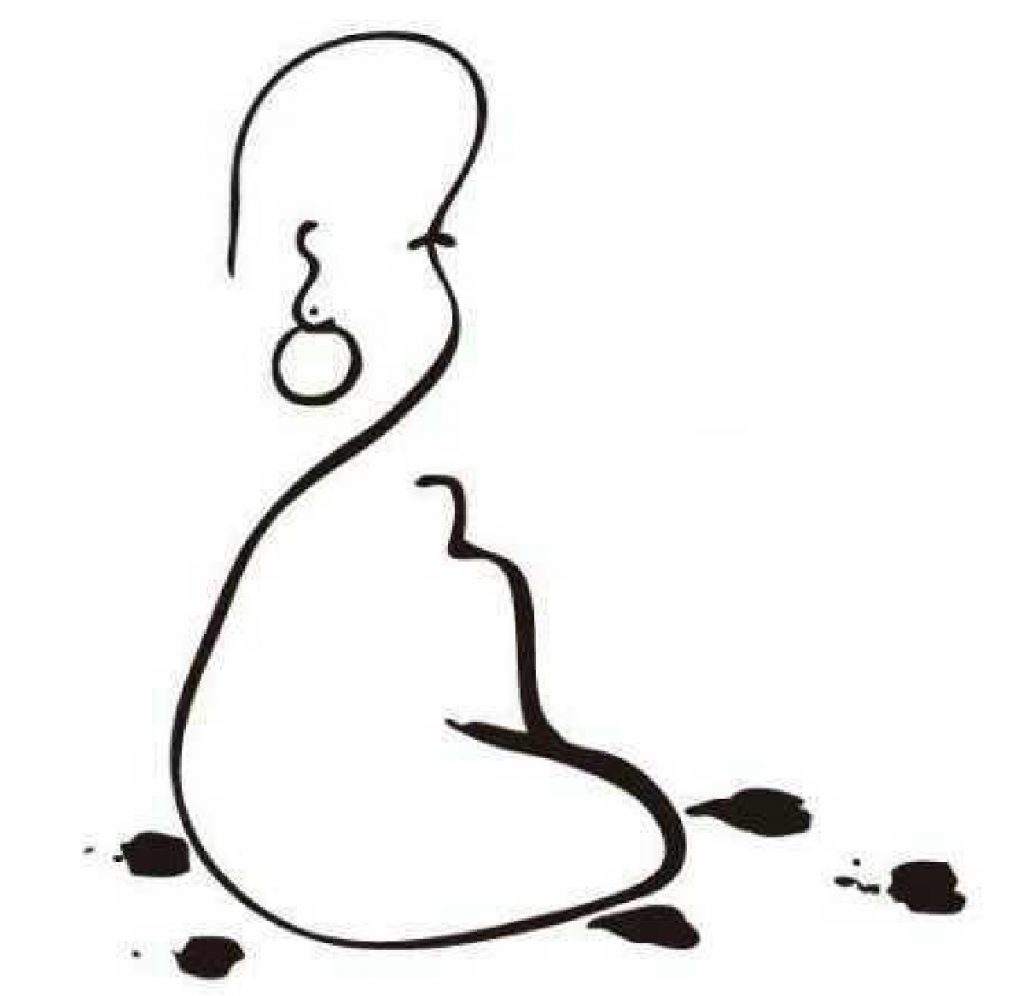 In life we tend to expect a lot from others or even dream for a lot than we actually need. On the positive side, it motivates us
In life we tend to expect a lot from others or even dream for a lot than we actually need. On the positive side, it motivates us 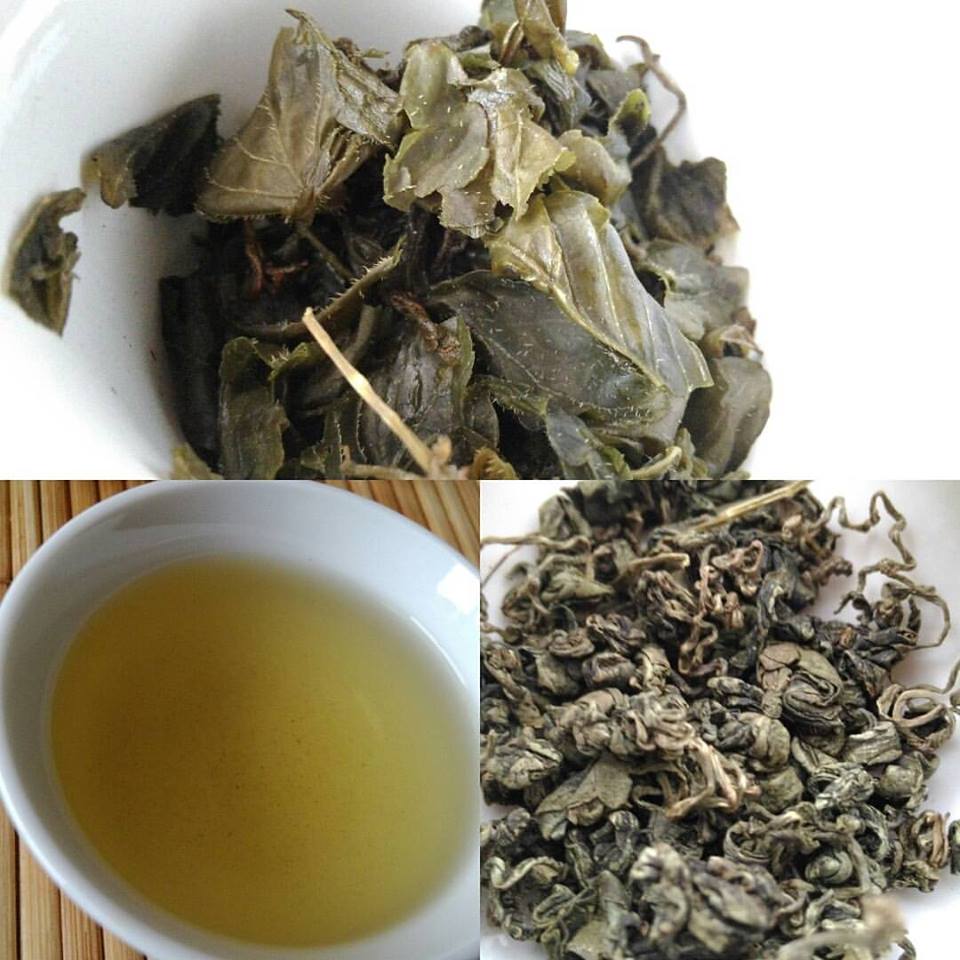 This is solar dried wild Jiao Gu Lan from China. Wild Jiao Gu Lan is a pure nature herbal tea used as Yang Shen Cha (養生茶) in the practice of Chinese Traditional Medicine. Jiao Gu Lan is known for the following health benefits:
This is solar dried wild Jiao Gu Lan from China. Wild Jiao Gu Lan is a pure nature herbal tea used as Yang Shen Cha (養生茶) in the practice of Chinese Traditional Medicine. Jiao Gu Lan is known for the following health benefits: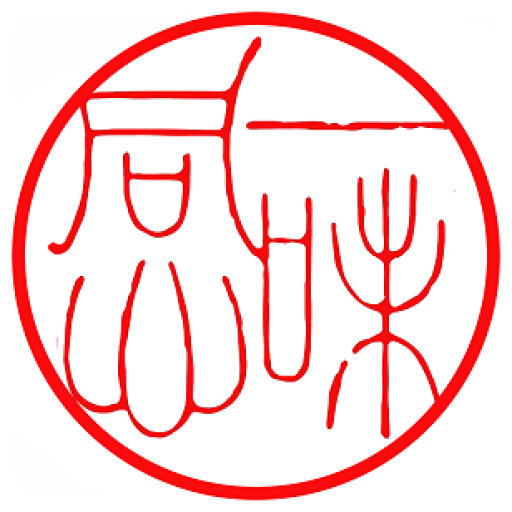 In order to protect the consumer’s rights, blended and/or flavoured tea must label the percentage (%) of content and compositions honestly starting from
In order to protect the consumer’s rights, blended and/or flavoured tea must label the percentage (%) of content and compositions honestly starting from 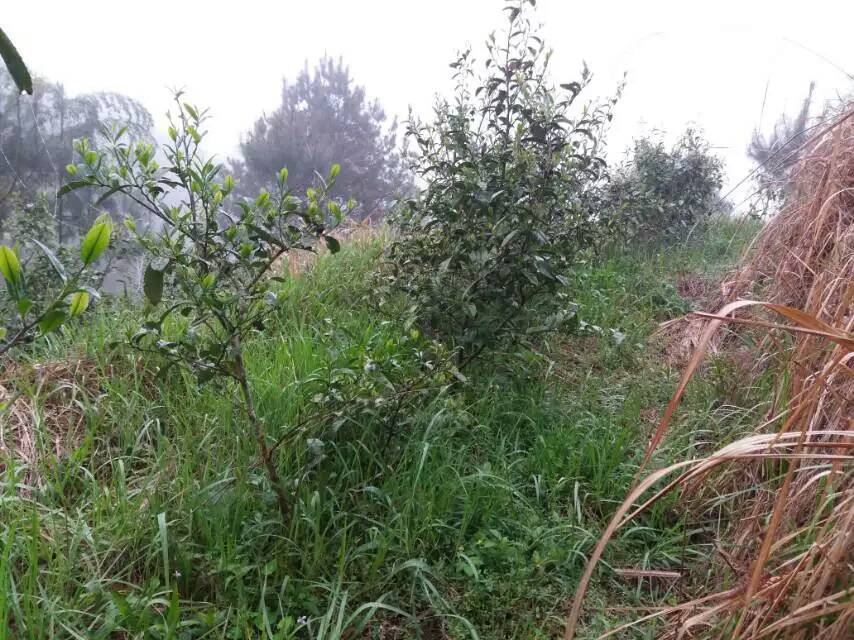
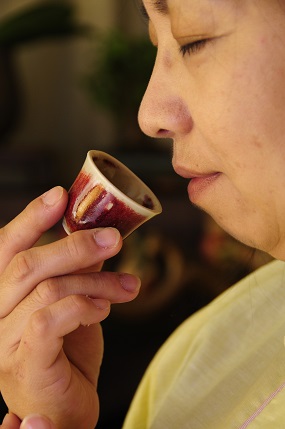 Making a cup of tea is easy, all you need is some tea leaves, water and tea ware.
Making a cup of tea is easy, all you need is some tea leaves, water and tea ware.
